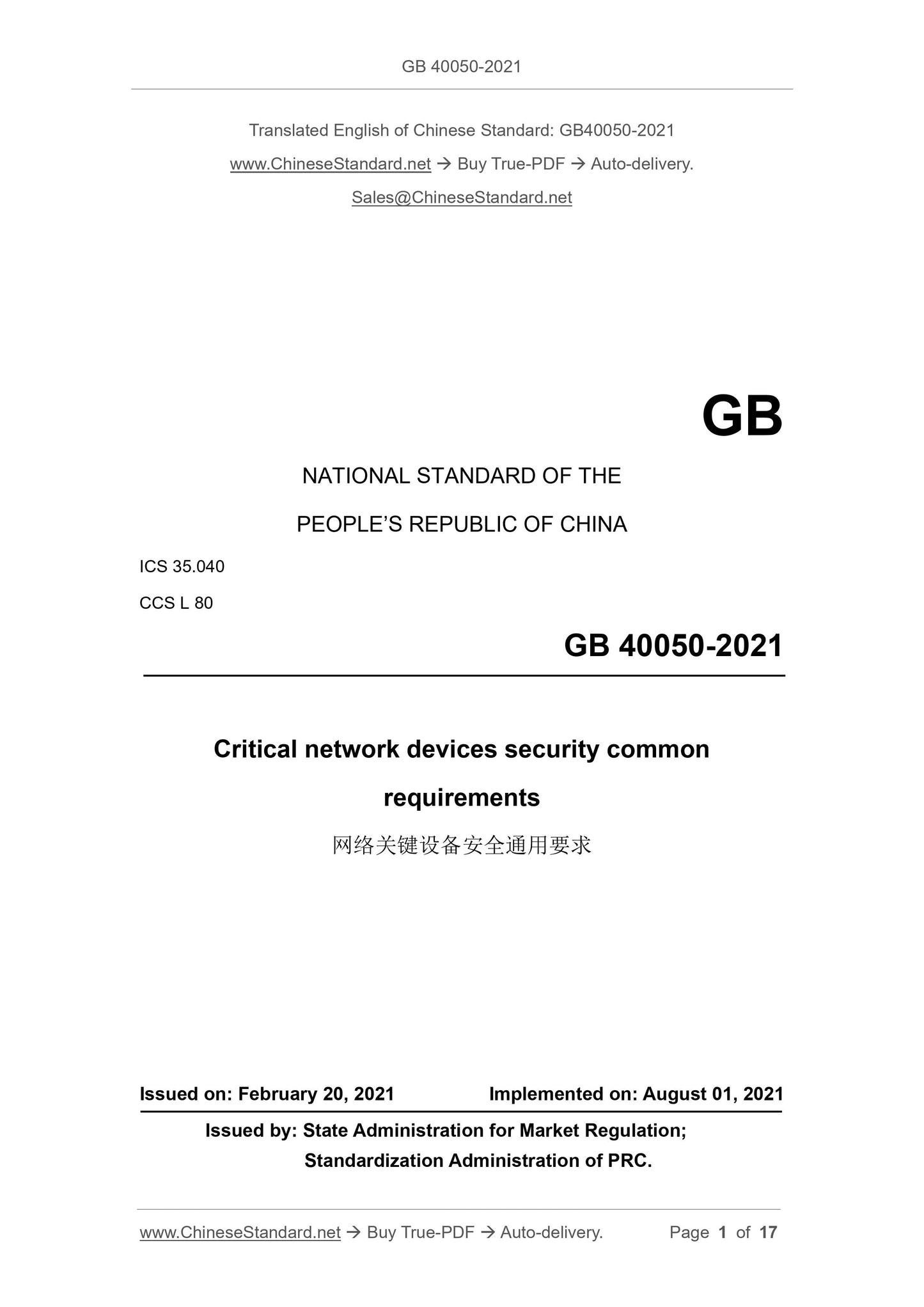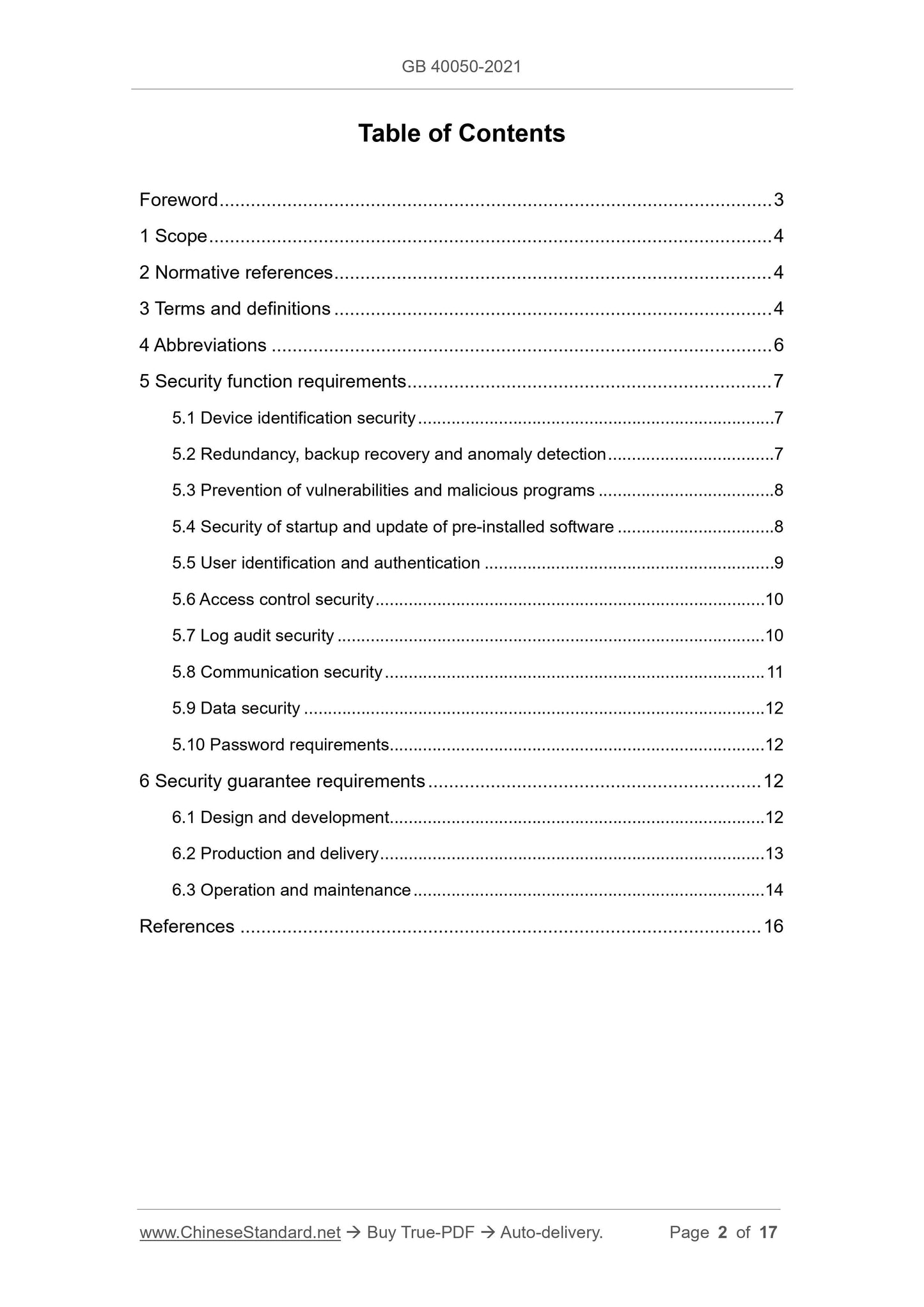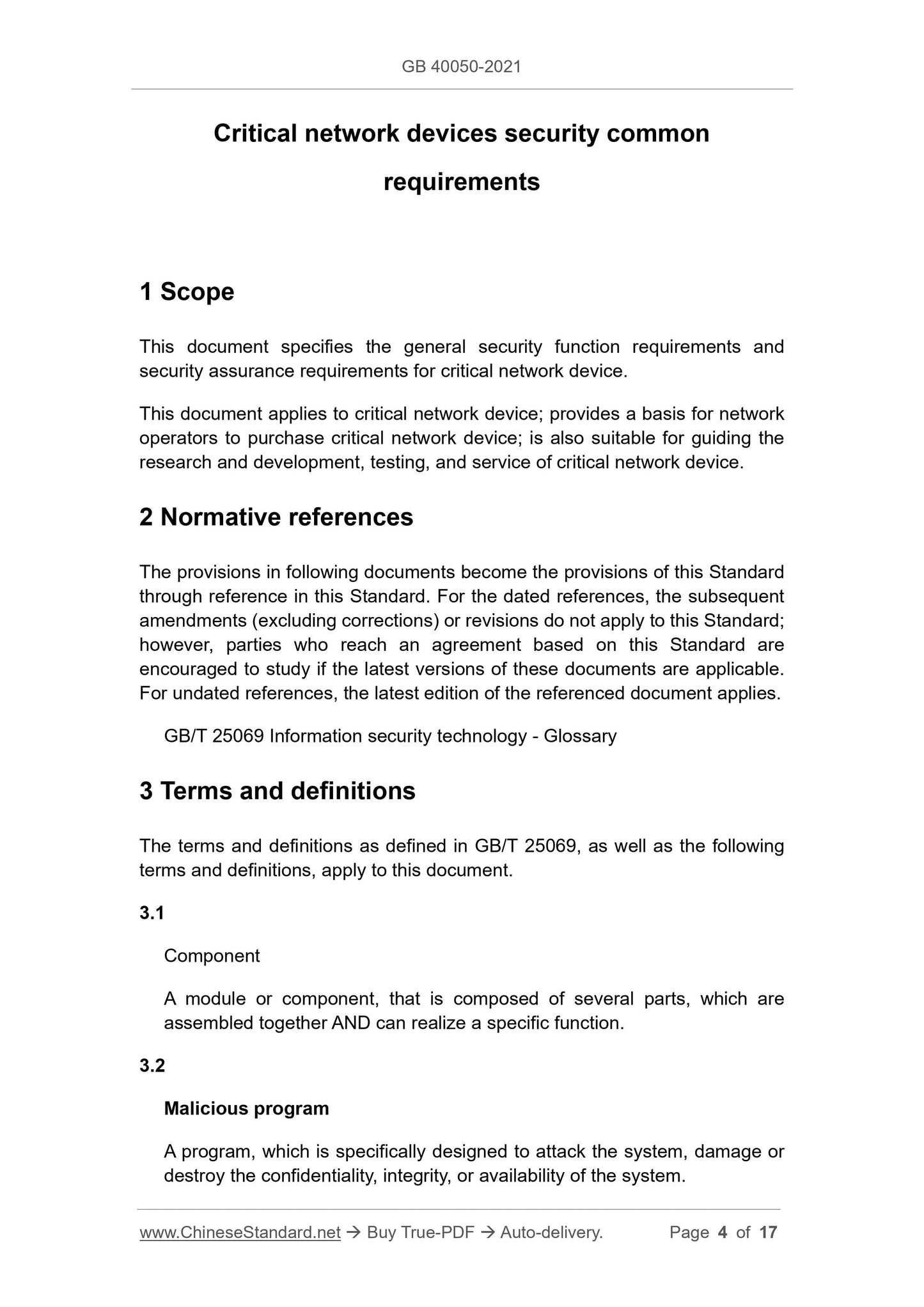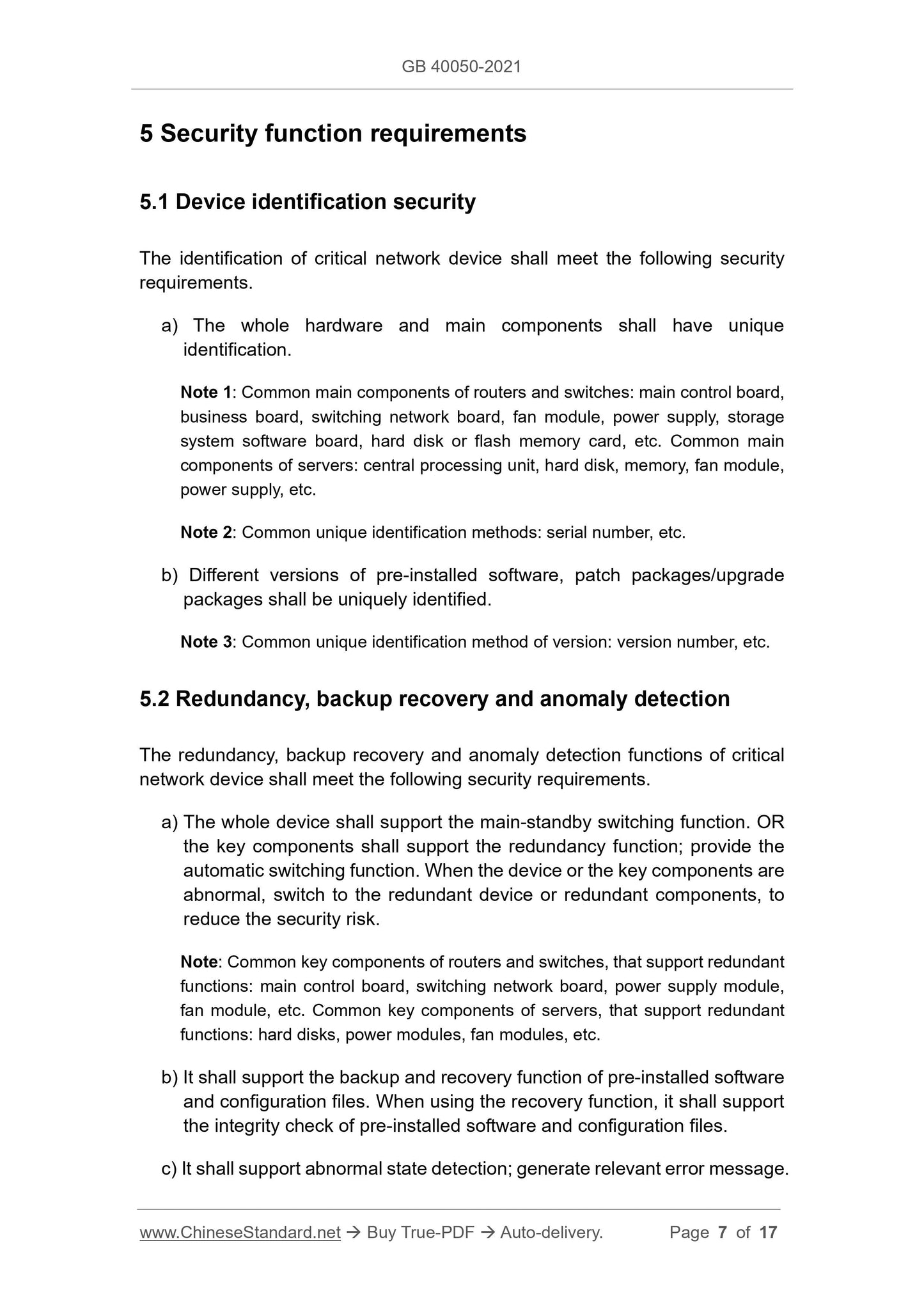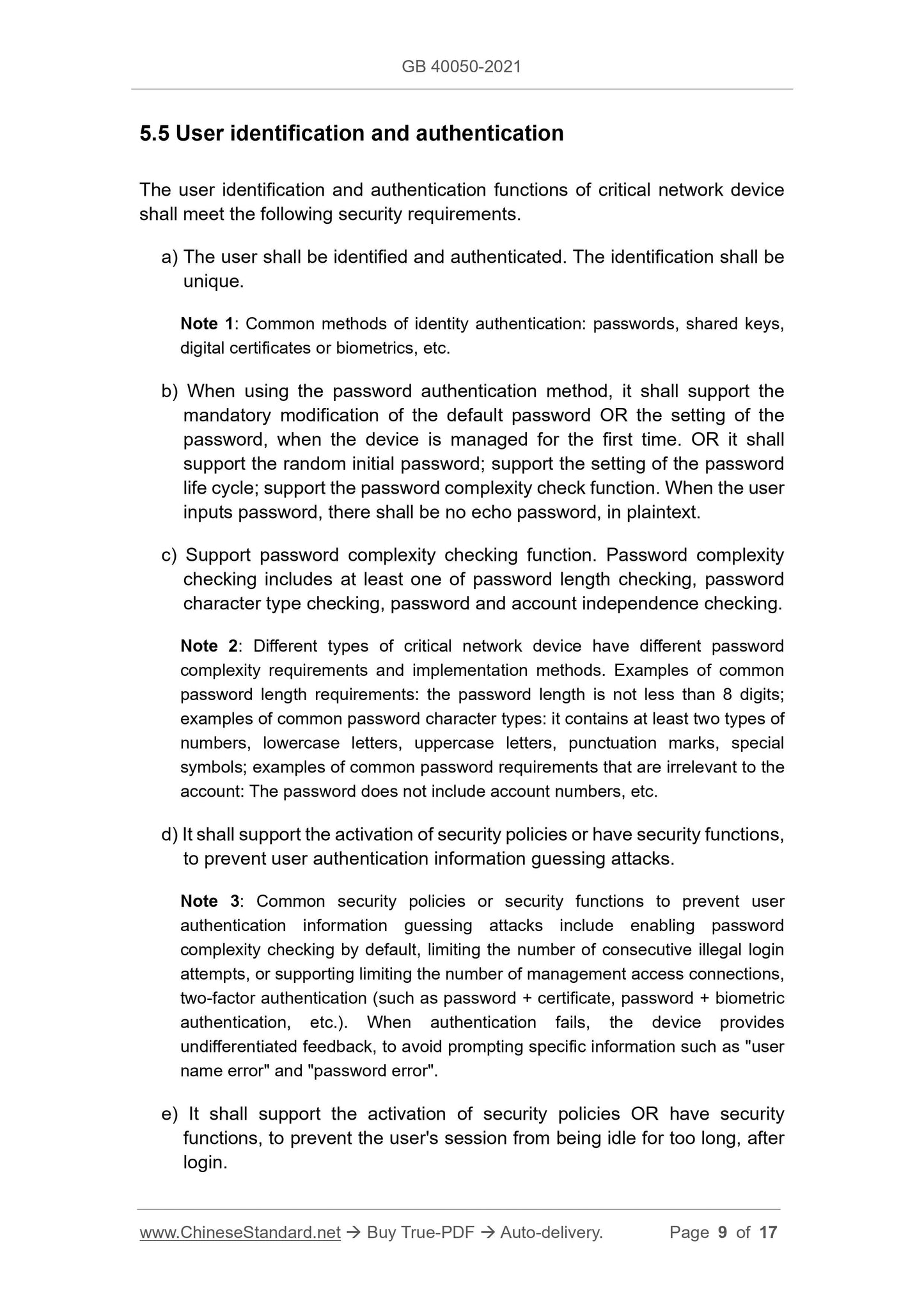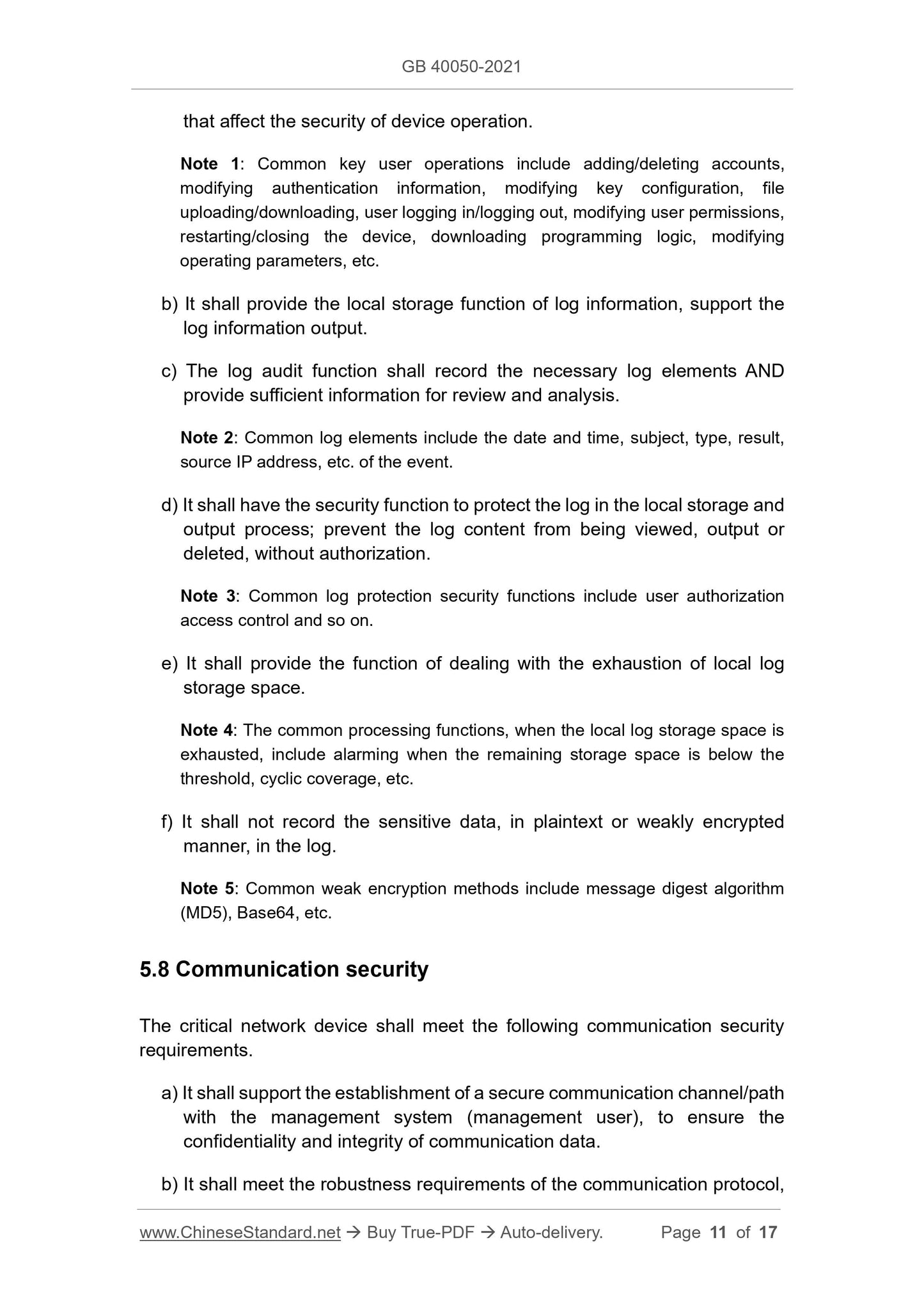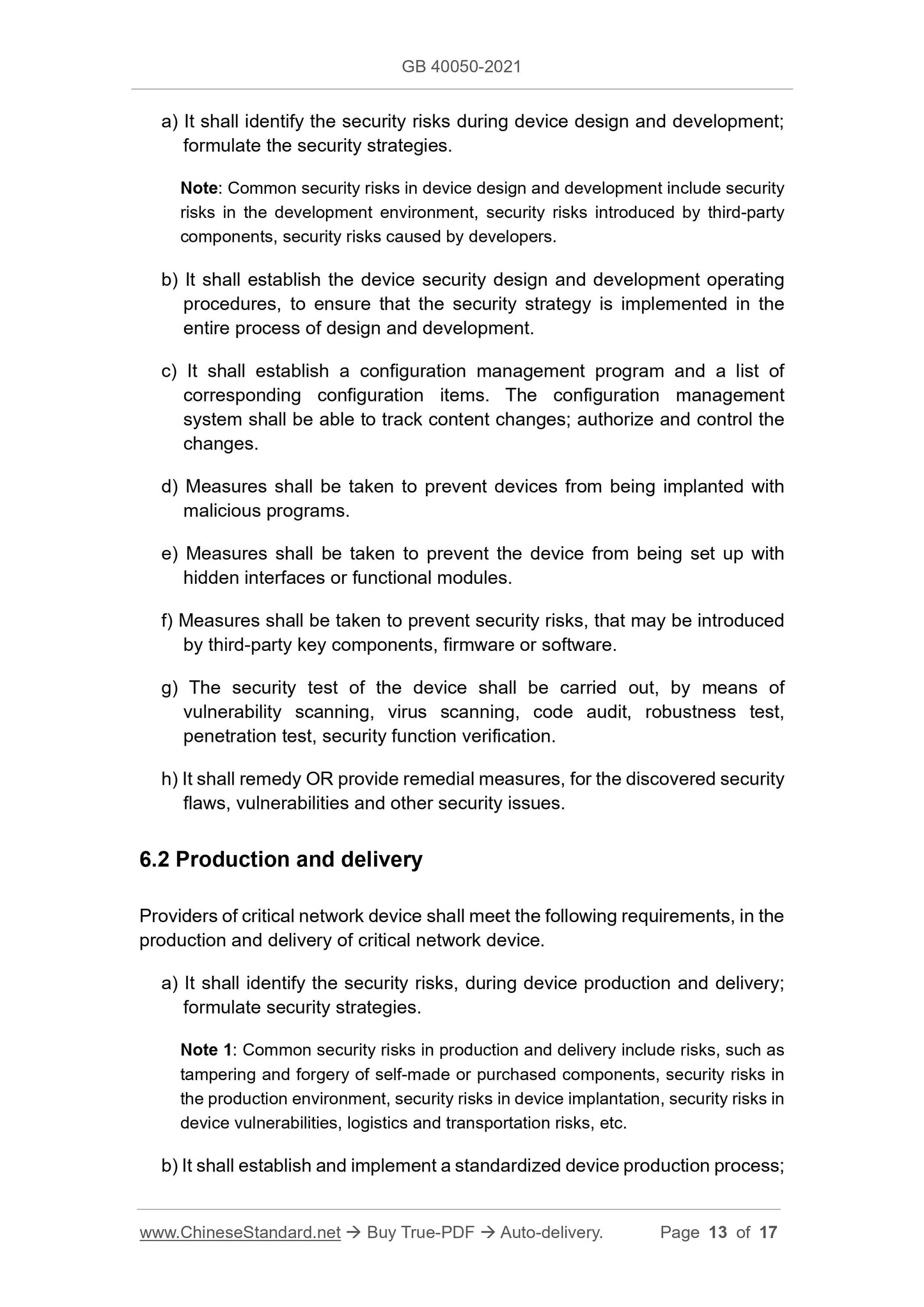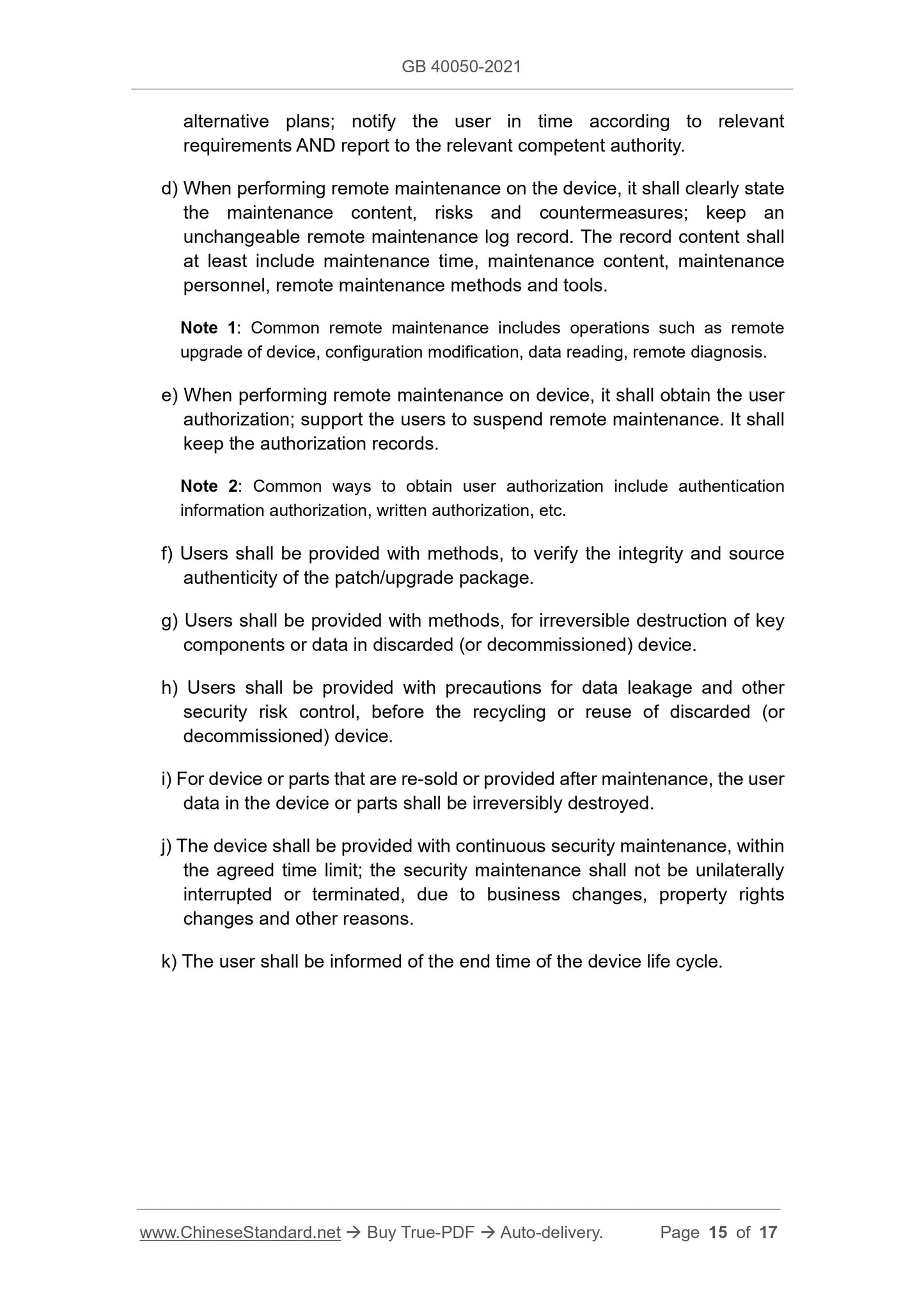1
/
of
8
www.ChineseStandard.us -- Field Test Asia Pte. Ltd.
GB 40050-2021 English PDF
GB 40050-2021 English PDF
Regular price
$175.00
Regular price
Sale price
$175.00
Unit price
/
per
Shipping calculated at checkout.
Couldn't load pickup availability
GB 40050-2021: Critical network devices security common requirements
Delivery: 9 seconds. Download (and Email) true-PDF + Invoice.Get Quotation: Click GB 40050-2021 (Self-service in 1-minute)
Newer / historical versions: GB 40050-2021
Preview True-PDF
Scope
This document specifies the general security function requirements andsecurity assurance requirements for critical network device.
This document applies to critical network device; provides a basis for network
operators to purchase critical network device; is also suitable for guiding the
research and development, testing, and service of critical network device.
Basic Data
| Standard ID | GB 40050-2021 (GB40050-2021) |
| Description (Translated English) | Critical network devices security common requirements |
| Sector / Industry | National Standard |
| Classification of Chinese Standard | L80 |
| Word Count Estimation | 10,166 |
| Issuing agency(ies) | State Administration for Market Regulation, China National Standardization Administration |
Share
